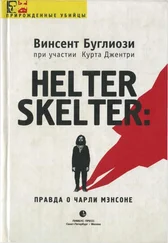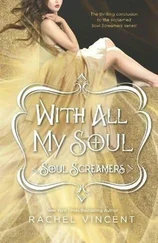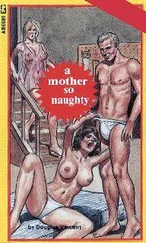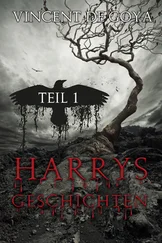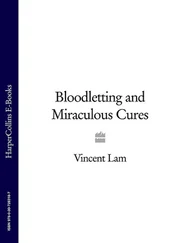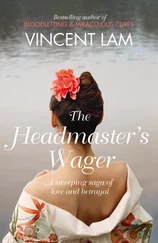The motive for the two murders is not known. It is known that the Willetts had been associated with the Manson Family for at least a year, and possibly longer. Police surmised that Lauren Willett was killed after learning of the murder of her husband, to keep her from going to the police. As for the murder of James Willett, the official police theory is that Willett himself may have been about to inform about the robberies the group had committed.
There is another possibility. It may be that both James and Lauren Willett were killed because they knew too much about still another murder.
James and Lauren. Something about those first names seemed familiar. Then it connected. On November 27, 1970, a James Forsher and a Lauren Elder drove defense attorney Ronald Hughes to Sespe Hot Springs. After Hughes disappeared, the couple were questioned but not polygraphed, the police being satisfied that when they left the flooded area Hughes was still alive.
At first I thought “Elder” might be Lauren Willett’s maiden name, but it wasn’t. Nor, in checking the police reports and newspaper articles, was I able to find any description of Forsher and Elder. All I did find were their ages, both given as seventeen, and an address, from which I subsequently learned they had long since moved. All other efforts to track them down were unsuccessful.
It appears unlikely that James Forsher and James Willett were the same person: Willett would have been twenty-four in 1970, not seventeen. But Lauren is a decidedly uncommon name. And, nineteen in 1972, she would have been seventeen in 1970.
Coincidence? There had been far stranger ones in this case.
One thing is now known, however. If an admission by one of Manson’s most hard-core followers is correct, Ronald Hughes was murdered by the Manson Family.
It was some weeks after the conclusion of the Tate-LaBianca trial before I received the autopsy report I’d requested from Ventura County. The identification, made through dental X-rays, was positive. The body was that of Ronald Hughes. Yet the rest of the autopsy report added little to the newspaper accounts. It noted: “The decedent was observed face down in a pool of water with the head and shoulder wedged under a large rock.” One arm was almost completely severed at the shoulder, and there were large open areas in the chest and back. Other than this, “no outward evidence of violence was noted” while “no evidence of foul play [was] indicated by the X-rays.” All this was qualified more than a little by the fact that the body was badly decomposed. As for the report’s primary findings, there were none: “Nature of death: Undetermined. Cause of death: Undetermined.”
The report did note that the stomach contained some evidence of “medication residue.” But its exact composition—drugs, poison, whatever—was, like the nature and cause of death, left undetermined.
Completely dissatisfied with the report, I requested that our office conduct an investigation into the death of Hughes. The request was denied, it being decided that since there was no evidence of foul play, such an investigation was unnecessary.
There the matter remained, until very recently. While the Tate-LaBianca trial was still in progress, motion-picture director Laurence Merrick began work on a documentary on the Manson Family. The film, simply titled Manson , dealt only briefly with the murders and focused primarily on life at Spahn and Barker ranches. I narrated a few segments, and there were interviews with a number of Manson’s followers. The movie was shown at the Venice Film Festival in 1972 and nominated for an Academy Award the following year. During its filming Merrick gained the confidence of the Manson girls. Sandra Good admitted, for example, on film, that when she and Mary Brunner learned of the Tate murders, while still in the Los Angeles County Jail, “Mary said, ‘Right on!’ and I said, ‘Wow, looks like we did it!’”
Off camera, and unrecorded, Sandy made a number of other admissions to Merrick. She told him, in the presence of one other witness, that to date the Family had killed “thirty-five to forty people.” And that “Hughes was the first of the retaliation murders.”
The trials did not write finis to the Manson saga. As Los Angeles Times reporter Dave Smith observed in West magazine: “To pull the curtain over the Manson case is to deny ourselves any possible hint of where the beast may come from next, and so remain afraid of things that go bump in the night, the way we were in August of 1969.”
Mass murders have occurred throughout history. Since the Tate-LaBianca slayings, in California alone: labor contractor Juan Corona has been convicted of killing twenty-five migrant farm workers; John Linley Frazier slaughtered Dr. Victor Ohta, his wife, two of his sons, and his secretary, then dumped their bodies in the Ohta swimming pool; in a rampage that lasted several months, Herbert Mullin killed thirteen persons, ranging in age from three to seventy-three; Edmund Kemper III, ruled insane after slaying his grandmother and grandfather, was ruled sane and released, to later kill his mother, one of her friends, and six college coeds; and a possible total of seventeen murders has been attributed to two young ex-convict drifters.
With the exception of the latter pair, however, these were the work of loners, obviously deranged, if not legally insane, individuals, who committed the murders by themselves .
The Manson case was, and remains, unique. If, as Sandra Good claimed, the Family has to date committed thirty-five to forty murders, this may be near the U.S. record. Yet it is not the number of victims which makes the case intriguing and gives it its continuing fascination, but a number of other elements for which there is probably no collective parallel in the annals of American crime: the prominence of the victims; the months of speculation, conjecture, and pure fright before the killers were identified; the incredibly strange motive for the murders, to ignite a black-white Armageddon; the motivating nexus between the lyrics of the most famous rock group ever, the Beatles, and the crimes; and, behind it all, pulling the strings, a Mephistophelean guru who had the unique power to persuade others to murder for him , most of them young girls who went out and savagely murdered total strangers at his command, with relish and gusto, and with no evident signs of guilt or remorse—all these things combine to make Manson perhaps the most frightening mass murderer and these murders perhaps the most bizarre in American history.
How Manson gained control remains the most puzzling question of all.
During the Tate-LaBianca trials, the issue was not so much how he did this but proving that he did it. Yet in understanding the whole Manson phenomenon, the how is extremely important.
We have some of the answers.
During the course of his wanderings Manson probably encountered thousands of persons. Most chose not to follow him, either because they sensed that he was a very dangerous man or because they did not respond to his sick philosophy.
Those who did join him were not, as noted, the typical girl or boy next door. Charles Manson was not a Pied Piper who suddenly appeared on the basketball court at Texas State, handed Charles Watson a tab of LSD, then led him into a life of crime. Watson had quit college with only a year to go, gone to California, immersed himself in the selling as well as the using of drugs, before he ever met Charles Manson. Not just Watson but nearly every other member of the Family had dropped out before meeting Manson. Nearly all had within them a deep-seated hostility toward society and everything it stood for which pre-existed their meeting Manson.
Читать дальше

